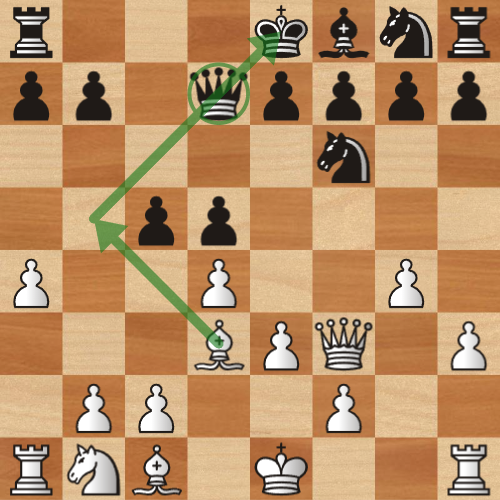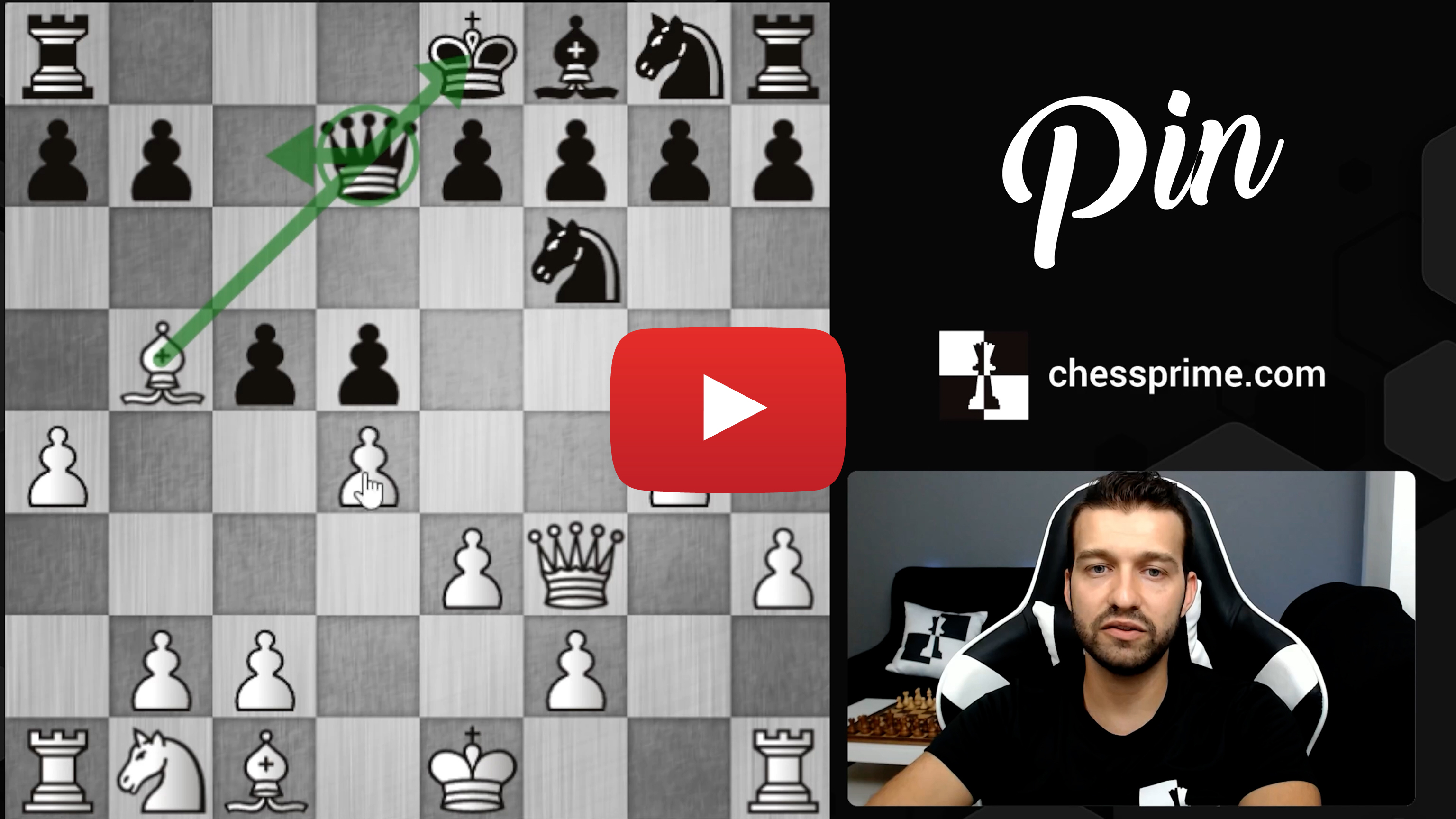What is a Pin?
A pin is a tactical motif in chess where an enemy piece cannot move without exposing a more valuable piece or the king to an attack. This tactic is very effective for immobilizing opposing pieces and gaining material or strategic advantage.
Key Features
- Immobilizes an enemy piece because moving it would expose another piece or the king to attack.
- Can be absolute (the piece cannot move because it would expose the king to check) or relative (moving it would lose valuable material).
- Usually involves long-range pieces such as bishops, rooks, or queens.
- Very useful to gain material, restrict the opponent's mobility, and control the board.
Pin Example
Case: White moves and pins an enemy piece.

The black king is on e8, the black queen on d7, and the white bishop on d3. Moving the bishop to b5 creates an absolute pin of the black queen: it cannot move without exposing the king to check.
Move: 1. Bb5
By moving the bishop, the queen is pinned to the king. The immobilized piece cannot move without losing material or allowing checkmate.
